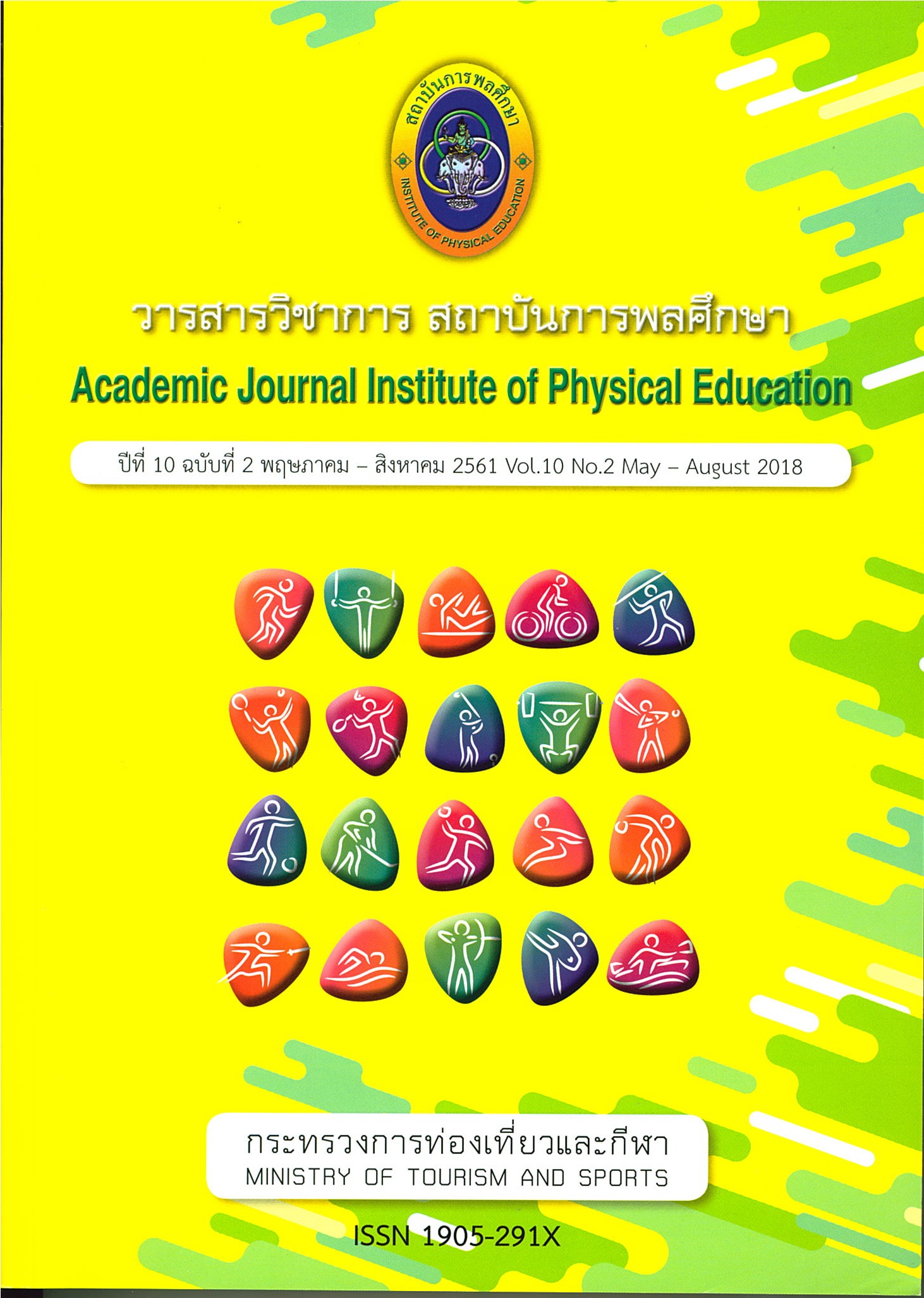The Development of Product and Souvenir Logo of Sa Kaeo
Main Article Content
Abstract
The purpose of this research was to study the tourism image regarding product and souvenir logo of SaKaeo province, and to design and develop the product and souvenir logo of SaKaeo province. Considered to be the research and development, this research employed a mixed method research including quantitative and qualitative researches. The quantitative research used questionnaires as a data collection tool. The sample included 400 Thai visitors who travelled to SaKaeo province. Data were analyzed statistically.The qualitative research was conducted with semi-structured interviewed. The sample included 5 experts who have work experiences regarding the products, souvenirs, and trademarks and in SaKaeo’s tourism industry. The results of the study were as follows:
1. The overall tourism image of Sa Kaeo province was in a good level. ( = 3.55, S.D. = 0.55). The affective image (
= 3.70, S.D. = 0.63) was the best tourism image type in the eye of the visitors visiting SaKaeo province, followed by the perceptual image (
= 3.52, S.D. = 0.65) and physical image (
= 3.42, S.D. = 0.61) respectively. 2. The product and souvenir logo of Sa Kaeo province reflected the combination of the prominent and memorable tourist destinations and provincial symbols. The tourist destination was Rong Kluea Market. The provincial symbols included the picturesof tourist destinations, orange jasmine flower, Indian gooseberry tree, butterfly, and the identity of the province as a bordering trade center.
Article Details
The published article is a copyright of the Academic Journal of Thailand National Sports University. The passage appeared in each article in this academic journal is a perspective of each author which is not related to the journal. Each author is required to be responsible for all components of his/her own article. If there are any mistakes, each author must be responsible for those mistakes on his/her own.
References
คณะกรรมการการพัฒนาเศรษฐกิจและสังคมแห่งชาติ. (2554). แผนพัฒนาเศรษฐกิจและสังคมแห่งชาติฉบับที่ 11 (พ.ศ. 2555-2559). กรุงเทพมหานคร: สหมิตรพริ้นติ้งแอนด์พับลิชชิ่ง.
เนตรชนก คงทน. (2551). ภาพลักษณ์ผลิตภัณฑ์เครื่องปั้นดินเผาบ้านด่านเกวียน อำเภอโชคชัย จังหวัดนครราชสีมา. วิทยานิพนธ์ปริญญามหาบัณฑิต, มหาวิทยาลัยราชภัฎนครราชสีมา, นครราชสีมา.
เบญจวรรณ ทองสิงห์. (2554). การรับรู้คุณค่าตราสินค้าของผู้บริโภคผ่านอัตลักษณ์ตราสินค้าบนถุง ช๊อปปิ้ง. วิทยานิพนธ์ปริญญามหาบัณฑิต, มหาวิทยาลัยเชียงใหม่, เชียงใหม่.
เวปไซต์จังหวัดสระแก้ว. (2559). บรรยายสรุปจังหวัดสระแก้ว ประจำปี 2558. สืบค้นเมื่อ 12 กุมภาพันธ์ 2559, จาก http://www.sakaeo.go.th
วุฒิชาติสุนทรสมัย. (2551). ภาพลักษณ์ของแหล่งท่องเที่ยวใครกำหนด. กรุงเทพมหานคร: เอส สแควร์ แมกกาซีน.
สภาหอการค้าแห่งประเทศไทย. (2556). บทสรุปสำหรับผู้บริหาร (Executive Summary) ยุทธศาสตร์การพัฒนากลุ่มจังหวัดภาคกลางตอนบน 2 (ลพบุรี สิงห์บุรี ชัยนาท อ่างทอง). สืบค้นเมื่อ 17 กุมภาพันธ์2559, จาก http://www.thaichamber.org/scripts/stratigic
สำนักงานสถิติสระแก้ว. (2557). จำนวนนักท่องเที่ยวที่มาท่องเที่ยวในจังหวัดสระแก้ว. สืบค้นเมื่อ 20 มกราคม 2559, จาก http://sakaeo.nso.go.th/index.php
Beerli, A. and Martin, J. D. (2004). Factors Influencing Destination Image. Annals of Tourism Research, 31(3), 657-681.
Echtner, C. M., and Ritchie, J. R. B. (2003). The Meaning and Measurement of Destination Image. The Journal of Tourism Studies, 14(1), 37-48.
Kotler, P. (2000). Marketing Management. New Jersey: Prentice - Hall.
Kotler, P. and Armstrong, G. (2014). Principles of Marketing: Global Edition. 15thed. Harlow: Pearson Education.
Leisen, B. (2001). Image Segmentation: the Case of a Tourism Destination. Journal of Service Marketing, 15(1) 49-66.
Nunnally, J. C. and Bernstein, I. H. (1994).Psychometric Theory. 3rd ed. New York: McGraw-Hill.
Rovinelli, R. J. and Hambleton, R. K. (1977). On the Use of Content Specialists in the Assessment of Criterion-Referenced Test Item Validity. Dutch Journal of Educational Research. 2, 49 - 60.
Yamane, T. (1973). Statistic: An Introductory Analysis. Tokyo: Harper International Edition.


